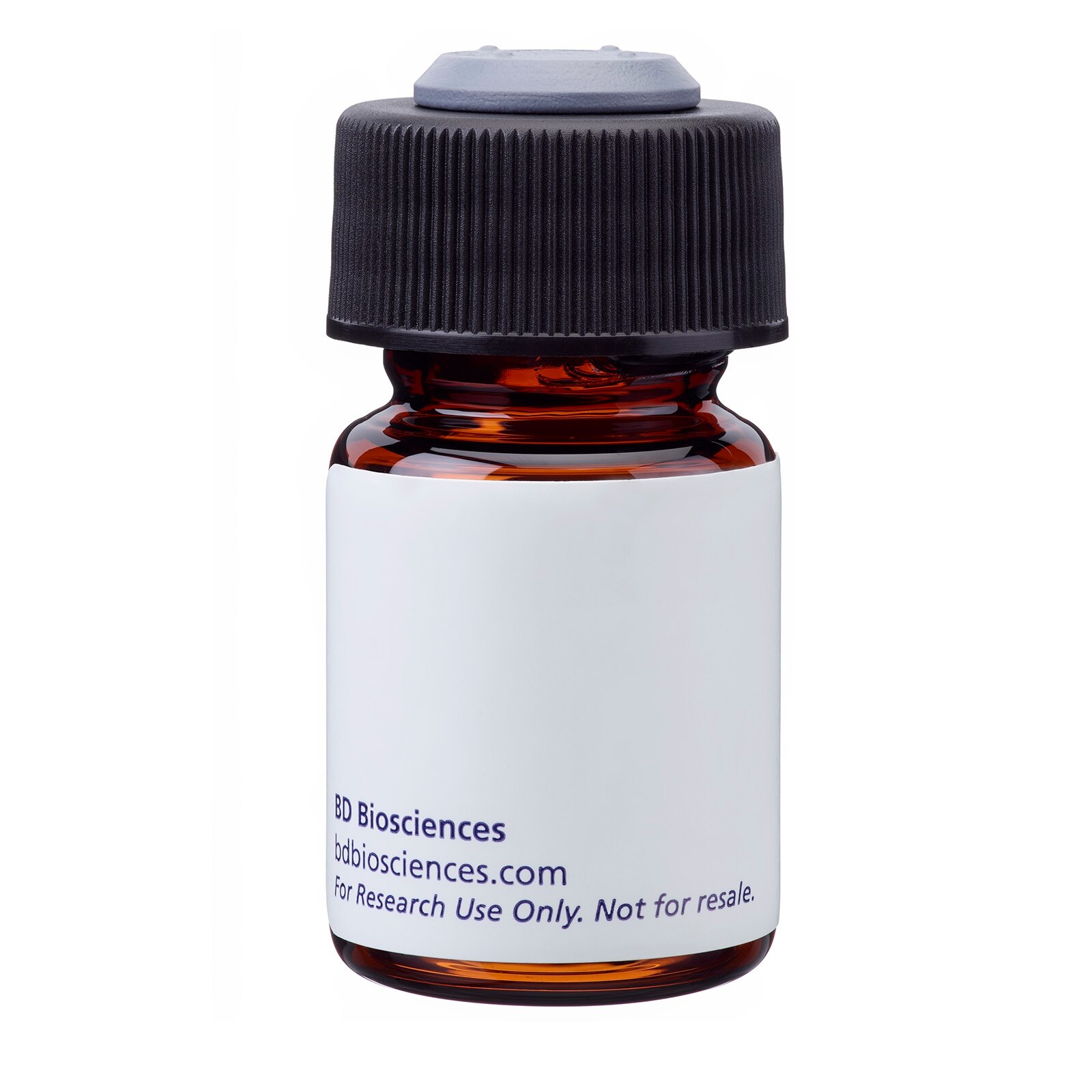Old Browser
Looks like you're visiting us from {countryName}.
Would you like to stay on the current country site or be switched to your country?



Profile of anti-MIC A/B (6D4) reactivity on HeLa cells analyzed by flow cytometry


BD Pharmingen™ PE Mouse Anti-Human MIC A/B

监管状态图例
未经BD明确书面授权,严禁使用未经许可的任何商品。
准备和存储
商品通知
- This reagent has been pre-diluted for use at the recommended Volume per Test. We typically use 1 × 10^6 cells in a 100-µl experimental sample (a test).
- Since applications vary, each investigator should titrate the reagent to obtain optimal results.
- Please refer to www.bdbiosciences.com/us/s/resources for technical protocols.
- For fluorochrome spectra and suitable instrument settings, please refer to our Multicolor Flow Cytometry web page at www.bdbiosciences.com/colors.
- Caution: Sodium azide yields highly toxic hydrazoic acid under acidic conditions. Dilute azide compounds in running water before discarding to avoid accumulation of potentially explosive deposits in plumbing.
- Source of all serum proteins is from USDA inspected abattoirs located in the United States.
The 6D4 monoclonal antibody specifically binds to the human MHC class I polypeptide-related sequence A (MICA, aka PERB11.1) and B (MICB. aka PERB11.2) proteins. These ~70 kDa transmembrane glycoproteins are homologs of the major histocompatibility complex class I molecules although they lack association with β2 microglobulin. The MHC class I-related MICA and MICB chains are expressed by some gut epithelial cells in vivo. MICA and MICB expression by other epithelial cells and cell types, including fibroblasts and endothelial cells, is induced by stress, eg, stress caused by bacterial and viral infections, autoimmunity or cellular transformation. Epithelial cell expression of MICA and MICB has also been detected in transplanted kidneys and pancreas that show histological signs of rejection and or cellular injury. This suggests their potential role in transplant immunopathology. MICA and MICB are ligands for NKG2D (CD314), an activating receptor expressed by natural killer (NK) cells, γδ T cells, CD8+ and some CD4+ αβ T cells. The 6D4 antibody reportedly blocks NKG2D-positive NK cell- and T cell-mediated cytotoxicity against MICA/B-positive target cells.

研发参考 (4)
-
Groh V, Bahram S, Bauer S, Herman A, Beauchamp M, Spies T. Cell stress-regulated human major histocompatibility complex class I gene expressed in gastrointestinal epithelium. Proc Natl Acad Sci U S A. 1996; 93(22):12445-12450. (Biology). 查看参考
-
Hankey KG, Drachenberg CB, Papadimitriou JC, et al. MIC expression in renal and pancreatic allografts. Transplantation. 2002; 73(2):304-306. (Biology). 查看参考
-
Jinushi M, Takehara T, Tatsumi T, et al. Expression and role of MICA and MICB in human hepatocellular carcinomas and their regulation by retinoic acid. Int J Cancer. 2003; 104(3):354-361. (Biology). 查看参考
-
Steinle A, Li P, Morris DL, et al. Interactions of human NKG2D with its ligands MICA, MICB, and homologs of the mouse RAE-1 protein family. Immunogenetics. 2001; 53(4):279-287. (Biology). 查看参考
Please refer to Support Documents for Quality Certificates
Global - Refer to manufacturer's instructions for use and related User Manuals and Technical data sheets before using this products as described
Comparisons, where applicable, are made against older BD Technology, manual methods or are general performance claims. Comparisons are not made against non-BD technologies, unless otherwise noted.
For Research Use Only. Not for use in diagnostic or therapeutic procedures.
Report a Site Issue
This form is intended to help us improve our website experience. For other support, please visit our Contact Us page.
